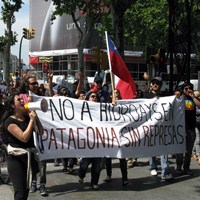As South America’s middle class continues to grow, two important political priorities will increasingly clash: the need to meet growing energy demand, and an increasing sensitivity to the environment. Until these legitimate interests can be reconciled, however, the massive investment required to meet burgeoning energy demand across the region will be less likely to materialize.
Brazil, whose Belo Monte Dam project is one of the most ambitious public works projects in the region, offers an excellent case in point. The project has been controversial since its inception in the 1970s, during the Brazilian dictatorship. Opponents successfully stalled the project due to environmental concerns over the possibility of the flooding of more than 120,000 acres of rain forest and the potential displacement of some 20,000 indigenous people. Nonetheless, Belo Monte was resurrected in 2002 by then-President Luiz Ignacio “Lula” da Silva as an integral part of the Accelerated Growth Program (Programa de Aceleração do Crecimento). Between 2005 and 2011, two environmental impact assessments were conducted, and both were approved by the Institute of Environment and Renewable Natural Resources (IBAMA). This approval caused considerable controversy and led to the resignations of two consecutive IBAMA presidents; several senior officials went on record to suggest that there had been high-level political pressure to approve the project in order to support Brazilian interest in clean energy development. At this stage it is unclear how issues surrounding the Belo Monte Dam project will be resolved. In the meantime, Brazil’s growing economy and expanding middle class is putting increasing demands on the energy grid.
Brazil, of course, is not alone. Establishing a clean, reliable and sustainable energy supply is vital for the entire Western Hemisphere. Energy security has often been the driver of regional policies, but environmental issues are becoming increasingly relevant, and they have important implications for the development of energy resources in the region. In addition to Belo Monte, some examples of energy security driving policy include Brazil’s ethanol program, initially begun in the 1970s to reduce the country’s reliance on crude imports that could be embargoed. Earthquake-prone Chile began pursuing a nuclear energy program in the 1970s because it lacked domestic energy supplies. More recently Chile began importing liquefied natural gas (LNG) from Asia because of the unreliability of natural gas supplies from Argentina. Venezuela dramatically increased its regional influence under President Hugo Chavez by meeting its neighbors’ energy needs with cut-rate supplies through the Petrocaribe program.

